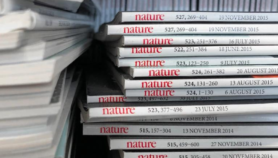By: N. Raghuram
Send to a friend
The details you provide on this page will not be used to send unsolicited email, and will not be sold to a 3rd party. See privacy policy.
For its own international credibility, Indian science must be seen to deal with scientific misconduct, says N. Raghuram
The case of plagiarism in India involving P. Chiranjeevi, a professor of chemistry at Sri Venkateswara University, Tirupati, once again highlights the urgent need to tackle misconduct in Indian science. Chiranjeevi was found guilty of plagiarising or falsifying results in many of the 70 journal papers he and his co-authors published between 2004 and 2007. His university enquiry panel found he had employed ″unethical and fraud[ulent] practices in publishing research papers″, many of which have since been retracted by publishers, such as Elsevier and Springer. The university authorities have blocked Chiranjeevi from doing further research and denied him salary increments and administrative positions.
Celebrity justice
But the response to misconduct in Indian science has been neither uniform nor consistent. In the absence of clearly defined policies and mechanisms, employers deal with complaints as it suits them.
When the accused are directors, director-generals, vice-chancellors, national awardees and presidents of national academies, a system of celebrity justice prevails: the consequence of misconduct depends on which side of the power equation you belong. For example, an official enquiry panel of seven Bhatnagar prize awardees (recipients of the most prestigious national award for scientists in India) ruled in favour of exonerating Gopal Kundu — another Bhatnagar awardee — from the charge of fraudulent publication, even though the paper was eventually retracted by the US Journal of Biological Chemistry after its own investigation.
Misconduct is on the increase
The increasing number of cases handled by the Society for Scientific Values (SSV) suggests plagiarism and misconduct is growing. K. R. Rao, the associate editor of the best known Indian journal, Current Science, says in the past two to three years he has spotted more than 80 cases of plagiarism in articles submitted for publication. This practice is prevalent among researchers and science writers, he says.
So far, there has been no rigorous survey to quantify the nature, extent and growth of plagiarism or misconduct in Indian science. So we do not know how much public money is being wasted on unreliable scientific output; whether it stems from failure or collusion of mentors; or what proportion of the guilty are punished and how consistently.
Direct copying is relatively easy to detect, with software available to help, but under our international peer review and publishing system, only plagiarism of words is detested: plagiarism of ideas is subtly encouraged and rewarded. For instance, one way to publish ‘honestly’ is to work along the lines expected by powerful reviewers, cite them profusely and avoid being too creative or unconventional. Other forms, such as gift authorship or inappropriate credit for otherwise original work, are more prevalent and damaging to the very culture of science. Directors, heads of departments and group leaders often expect to be co-authors on papers by their subordinate colleagues, even when they have not contributed to the work.
Falsification, fabrication and suppression of negative data hinder the progress of science, as substantial time and money are wasted by researchers misled by such work. Exposing such serious misdemeanours is difficult and requires an elaborate investigative structure, which leaves the ground open for mishandling or even cover-up.
Clamping down on the problem
None of these problems is unique to Indian science. SSV found two instances in the past year of UK scientists plagiarising Indian work and a third, involving a European group appeared recently in a prestigious US Academy journal, which allowed the plagiarising paper to stand by citing the plagiarised source. Even half a century ago, the handling of G. N. Ramachandran’s seminal paper in Nature on the collagen triple helix by Francis Crick was controversial in some quarters. International organisations of editors and publishers such as the Committee for Publishing Ethics (COPE) can help in ensuring consistent, fair and equitable handling of misconduct cases.
Every nation must do its bit to stem the rot. Many countries already have some formal system in place to deter, detect and punish misconduct. The Indian government must set up a national body and adopt a national policy to foster research integrity and enact laws to deter misconduct and protect whistle-blowers, without waiting for UNESCO, the International Council for Science (ICSU) or upcoming international norms.
Indian scientists, academies and professional societies can help deter misconduct through mentoring, peer pressure and scientific audit. The reviewers and editors of Indian journals must do their bit to expose plagiarism and fraud, and not leave it entirely to the mass media. We must avoid treating misconduct as a taboo and discuss it openly.
Ironically, India led the world, when its scientists established SSV in 1986 with a bottom-up demand for regulating misconduct, but is now reduced to a follower of other countries that adopted a top-down approach. Nevertheless, the credibility of Indian science lies in improving and showcasing how it deals with misconduct, rather than in pushing it under the carpet.
N. Raghuram is secretary of the Society for Scientific Values and reader at the School of Biotechnology, GGS Indraprastha University, Delhi. These views are his own.













